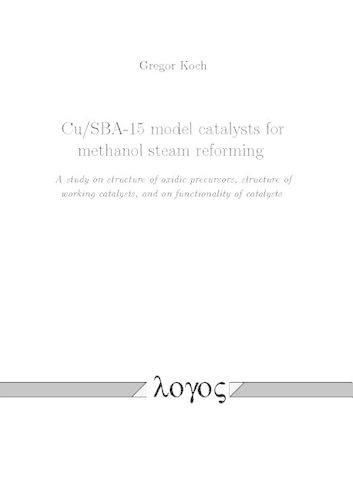Readings Newsletter
Become a Readings Member to make your shopping experience even easier.
Sign in or sign up for free!
You’re not far away from qualifying for FREE standard shipping within Australia
You’ve qualified for FREE standard shipping within Australia
The cart is loading…






In this book, the Cu/SBA-15 model catalyst for methanol steam reforming is described in detail. This study is an exemplarily road map for investigating model catalysts. The mesoporous structure of SBA-15 support, the structure of supported copper nanoparticles and their activity with regard to H_2production are presented. Based on that, structure activity correlations are deduced. Moreover, relationships between the structure of precursors and the structure of active catalysts are deduced. Therefore several analytical are presented: N_2Physisorption, DR-UV/Vis, in situ XANES, TPR, in situ XRD, specific copper surface area (N_2O), size and strain analysis of copper nanoparticles, H_2production by methanol steam reforming. The reliable analysis procedure of each experimental method is described and can be principally employed on similarly constructed catalysts.
$9.00 standard shipping within Australia
FREE standard shipping within Australia for orders over $100.00
Express & International shipping calculated at checkout
In this book, the Cu/SBA-15 model catalyst for methanol steam reforming is described in detail. This study is an exemplarily road map for investigating model catalysts. The mesoporous structure of SBA-15 support, the structure of supported copper nanoparticles and their activity with regard to H_2production are presented. Based on that, structure activity correlations are deduced. Moreover, relationships between the structure of precursors and the structure of active catalysts are deduced. Therefore several analytical are presented: N_2Physisorption, DR-UV/Vis, in situ XANES, TPR, in situ XRD, specific copper surface area (N_2O), size and strain analysis of copper nanoparticles, H_2production by methanol steam reforming. The reliable analysis procedure of each experimental method is described and can be principally employed on similarly constructed catalysts.